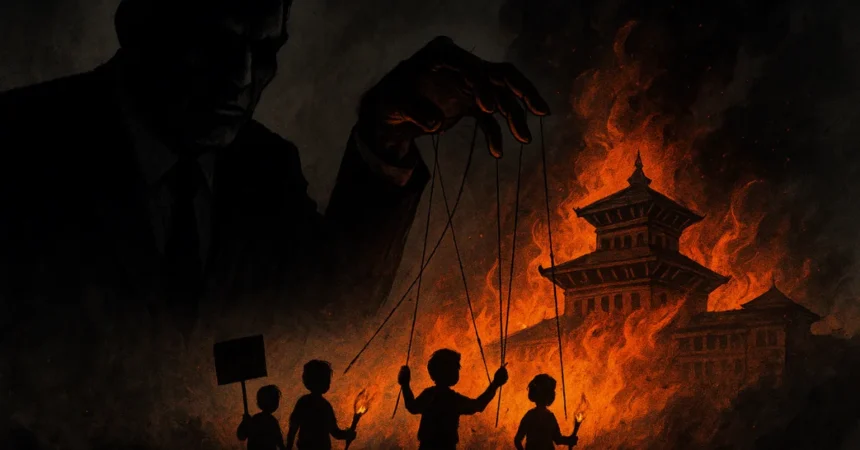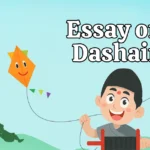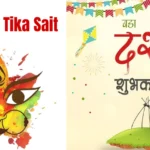An analysis of the September 2025 protests and the convenient destruction of evidence
The streets of Kathmandu tell a story that goes beyond youthful rebellion. As Gen Z protesters burned Singha Durbar, the Supreme Court building, Parliament, and other key government buildings, while at least 19 people lost their lives, a disturbing pattern emerges. Behind the genuine anger of Nepal’s youth lies a more sinister possibility: their justified rage has been used by the very corrupt elites they wanted to challenge.
The Anatomy of Convenient Destruction
When protesters set fire to Nakhhu Jail, releasing all prisoners including high-profile detainee Rabi Lamichhane, and damaged the Road Department building and the Commission for the Investigation of Abuse of Authority, we must ask: was this random destruction or strategic targeting?
Consider what was lost in those flames:
- Decades of corruption cases
- Financial records and ongoing investigations
- Evidence of money theft
- Documentation of political wrongdoing
The timing is too convenient, the targets too specific, and the people who benefit too obvious to dismiss as coincidence.
The Commission for the Investigation of Abuse of Authority housed sensitive files on high-ranking officials across multiple governments. Its destruction was not just symbolic but surgical. Similarly, the Road Department, notorious for inflated contracts and bribery schemes, saw its records conveniently erased when several major corruption investigations were reaching critical phases.
The Gen Z Shield Strategy
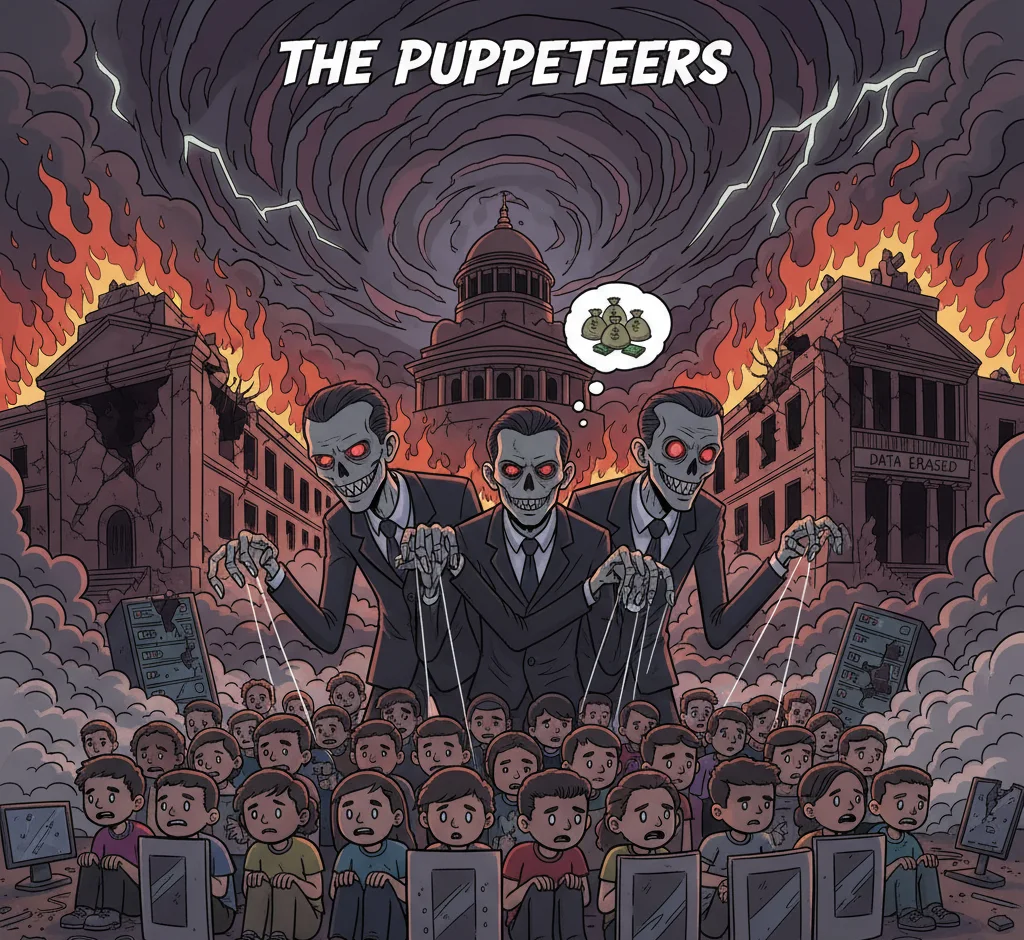
Nepal’s Generation Z had every right to be angry. They faced widespread corruption, poor economic opportunities, and government bans on social media platforms. Their anger was real and justified. But real anger, when skillfully manipulated, becomes the perfect cover for darker plans.
This generation, born into digital connectivity and raised on promises of transparency, found themselves suddenly silenced by social media bans. Their rage was pure, their cause right, making them the ideal front for more calculated actors working behind the scenes.
The clever manipulation lies in this: use genuine complaints to mobilize youth, then guide their destruction toward specific targets while remaining invisible. The protesters believed they were striking at the heart of corruption. They may have unknowingly been destroying its evidence instead.
As one political analyst noted, “When young voices demand justice, who questions their methods? When they march for transparency, who suspects they might be unknowingly helping to destroy evidence?”
A History of Opportunistic Politics
Nepal’s political landscape has long been characterized by leaders who transform crises into opportunities:
- The 2015 earthquake saw aid money disappear into private pockets
- The COVID-19 pandemic became a vehicle for medical supply procurement scandals
- Each crisis presented openings for skilled corruption
The current protests follow this established pattern. Previous governments have repeatedly shown an ability to emerge from chaos not just unscathed, but actually strengthened. Their past misdeeds get conveniently hidden by the smoke of “revolutionary” destruction.
Consider the strategic brilliance: create conditions that lead to youth unrest, then ensure that unrest targets the very institutions housing evidence of your crimes. When the flames die down, you emerge as either a victim of mob rule or a steady hand guiding recovery while evidence lies buried in rubble.
The Invisible Hand Behind the Chaos
Who benefits when Singha Durbar burns and the Supreme Court building is torched? Not the young protesters risking their lives. The beneficiaries are those whose names appear in files now reduced to ash.
Key beneficiaries include:
- Officials whose corruption cases can no longer proceed due to lack of evidence
- Politicians whose bank account details were stored in destroyed databases
- Business leaders whose bribery records were housed in burned buildings
- Anyone facing investigation by the Commission for the Investigation of Abuse of Authority
The sophistication required to transform genuine youth anger into such precisely targeted destruction suggests coordination beyond spontaneous protest movements. This level of strategic thinking points to planning by individuals with intimate knowledge of where the most damaging evidence was stored.
The Jail Break Gambit
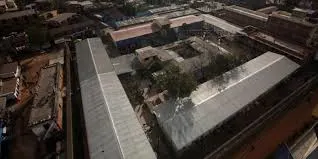
The freeing of prisoners from Nakhhu Jail, including prominent political figure Rabi Lamichhane, represents perhaps the most audacious aspect of this potential conspiracy. The chaos of mass prisoner release serves multiple purposes:
- Creates disorder that justifies harsh government responses
- Frees individuals who possess sensitive information about corruption networks
- Establishes precedent for dismissing future prosecutions as products of the “previous, corrupt system”
Patterns of Manipulation Across Generations
This would not be the first time Nepal’s youth have been unwittingly used as tools by corrupt elites. Historical examples include:
- 1990 People’s Movement: Promised transparency but delivered new forms of corruption
- 2006 revolution against monarchy: Created space for republican corruption to flourish
- Current protests: May have been manipulated to destroy evidence while appearing revolutionary
Each generation of young Nepalis has learned, too late, that their sacrifices enriched the very people they fought against.
What makes the current situation more concerning is the technological sophistication involved. Social media bans did not just anger youth but forced protests into physical spaces where destruction could be more easily guided toward specific targets.
The Perfect Crime?
If this theory holds true, we are witnessing perhaps the perfect political crime: using genuine popular anger to destroy evidence of elite corruption while maintaining complete deniability.
The scheme’s multiple layers of protection:
- If investigations begin, they can blame the “revolutionary youth”
- If specific targeting is questioned, they can claim it was chaos of revolution
- If anyone gets too close to the truth, they can manufacture new crises
- The perpetrators remain invisible, their fingerprints absent from the crime scene
As one observer put it, “The beauty of using genuine protest movements is that the anger is real, the grievances are legitimate, but the outcomes can be carefully steered toward benefiting those who appear to be the targets.”
The Aftermath: Rebuilding or Covering Up?
As Prime Minister Oli resigned and fled to army barracks, the deeper question remains: when new institutions are built from the ashes of the old, who will control the reconstruction process?
Those with the resources and motivation to orchestrate such sophisticated manipulation are precisely the individuals best positioned to shape whatever emerges from this chaos. The rebuilding phase offers additional opportunities:
- New record-keeping systems can be designed with built-in vulnerabilities
- Fresh institutional frameworks can include provisions that benefit the same networks
- The narrative of “post-revolutionary renewal” provides perfect cover for future corruption
Questions That Demand Answers
Nepal’s Gen Z deserves better than to be remembered as the generation that unknowingly helped destroy evidence against the corrupt elites they sought to challenge. Critical questions that need investigation:
- Why were evidence-holding institutions specifically targeted?
- Who had detailed knowledge of what evidence was stored where?
- How did spontaneous protests become so strategically focused?
- Who benefits most from the destruction of these specific buildings?
As one legal expert noted, “When protesters burn down a bakery, it’s anger. When they systematically target every building that houses evidence against powerful people, it’s strategy.”
Conclusion: Revolution or Cover-Up?
As the smoke clears from Kathmandu’s burning buildings, the most important question is not who lit the fires, but who benefits most from what those fires consumed. In a country where corruption has repeatedly adapted to survive every challenge, we must ask whether the latest revolution was truly revolutionary or simply the most elaborate cover-up yet devised by Nepal’s networks of elite corruption.
The youth who risked everything for change deserve answers. More importantly, they deserve to ensure that their sacrifices were not manipulated into destroying the very evidence needed to build the transparent, accountable Nepal they died fighting for.
The pattern is clear: genuine youth anger plus strategic guidance equals convenient evidence destruction. The question now is whether Nepal will recognize this pattern before it is too late to seek justice for both the protesters who died and the corruption they died fighting against.
Also Read:



